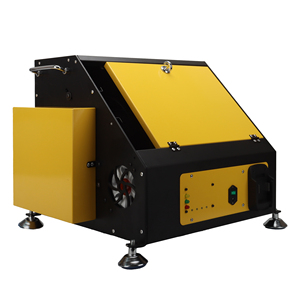(19 products available)





















































































A manual clay pigeon thrower is used to launch clays into the air for hunters to shoot at. These throwers are operated by hand and do not require power or batteries. Instead, they use a lever or foot mechanism to launch the clays. There are several types of manual clay pigeon throwers. They include the following:
Hand-held Throwers
These are simple devices that can be operated by a single person. They usually come with a small metal or plastic arm that is pulled back and released to throw the pigeons. Some may require a spring mechanism. There are two main types of hand-held throwers: single-arm and dual-arm throwers. The single-arm throwers use a single metal arm to launch the clay pigeons. On the other hand, dual-arm throwers use two metal arms to launch the pigeons. Compared to single-arm throwers, dual-arm throwers have a wider throwing range and can launch more pigeons at a time.
Moreover, hand-held throwers can be either manual spring-operated or manual lever-operated.
Traps
These throwers are mounted on a stand to make them more stable. They come with a foot pedal that is used to launch the clay pigeons. The foot pedal provides an advantage since it allows the shooter to track the pigeons better. Additionally, some traps come with a rotating mechanism that enables them to launch the pigeons in different directions.
Trolley-Mounted Throwers
These are an upgrade of the standard traps. They are mounted on a trolley and can easily be moved around the shooting area. This feature allows shooters to practice different shooting scenarios. Trolley-mounted throwers also come with foot pedals for launching the pigeons.
Throwing Arms
These are permanent clay throwers that can be mounted on a fence or stand. They are operated using a pull bar or lever. Throwing arms are designed to launch a single clay at a time, but some models can launch two clays simultaneously. They have a set throwing angle that is ideal for different shooting scenarios.
A manual clay pigeon thrower is a device used to hurl clay pigeons into the air for shooting practice. These throwers are widely used for various shooting sports and training purposes. Here are some common usage scenarios:
When purchasing a manual clay pigeon thrower, one should consider the various features that will impact their shooting experience. Here are some key features to consider:
By considering these factors, one can choose a manual clay pigeon thrower that meets their needs and preferences.
Manual clay throwers come in various designs, each tailored for specific functions and features that enhance the clay shooting experience. Here are some functions, features, and design elements of manual clay pigeon throwers:
Function
Manual clay throwers are primarily designed to launch clay pigeons for shooting practice. The launcher's mechanism, whether it's a lever, foot, or hand-operated system, allows users to throw the pigeons at varying angles and speeds. This variability helps create different shooting scenarios, simulating live hunting conditions. Moreover, these throwers are not only meant for individuals but can also cater to groups, providing an efficient way to set up shooting exercises for multiple participants.
Feature
One key feature of manual clay throwers is their adjustability. Users can often modify the throwing angle, speed, and even the frequency of the throw to suit specific training needs. Some advanced models come with a rotary mechanism that can throw clays in a 360-degree radius, offering a comprehensive range of trajectories. Durability is another important feature; most throwers are constructed from heavy-duty materials like steel or reinforced plastic, ensuring they can withstand repeated use. Additionally, portability cannot be overlooked. Many manual throwers are designed to be lightweight and foldable, making them easy to transport and set up in different locations.
Design
In terms of design, manual clay throwers often incorporate ergonomic elements to enhance user comfort and reduce fatigue. For instance, lever arms may have padded grips, and the overall design is usually streamlined to facilitate easy operation. Safety mechanisms are also integral to the design, preventing accidental discharges and ensuring the user's safety during operation. This might include a locking mechanism or a safety catch.
Q1: Is it safe to use a clay pigeon thrower?
A1: Of course, it is safe if the throwers are used properly. Users should follow the provided instructions and precautions to avoid accidents.
Q2: What are the different types of clay targets that can be used?
A2: Various target types include standard, battue, rabbit, and midi clays. Each target type serves a unique purpose and presents shooters with distinctive challenges.
Q3: Can manual clay pigeon throwers be used for different shooting sports?
A3: Yes, manual throwers can be used for different shooting sports. It can be used for trap shooting, skeet shooting, or sporting clays training.
Q4: What are the advantages of using a manual clay pigeon thrower?
A4: Buyers will get many benefits if they use a manual clay pigeon thrower. For instance, it's affordable, portable, and easy to use, and it doesn't need electricity or batteries.